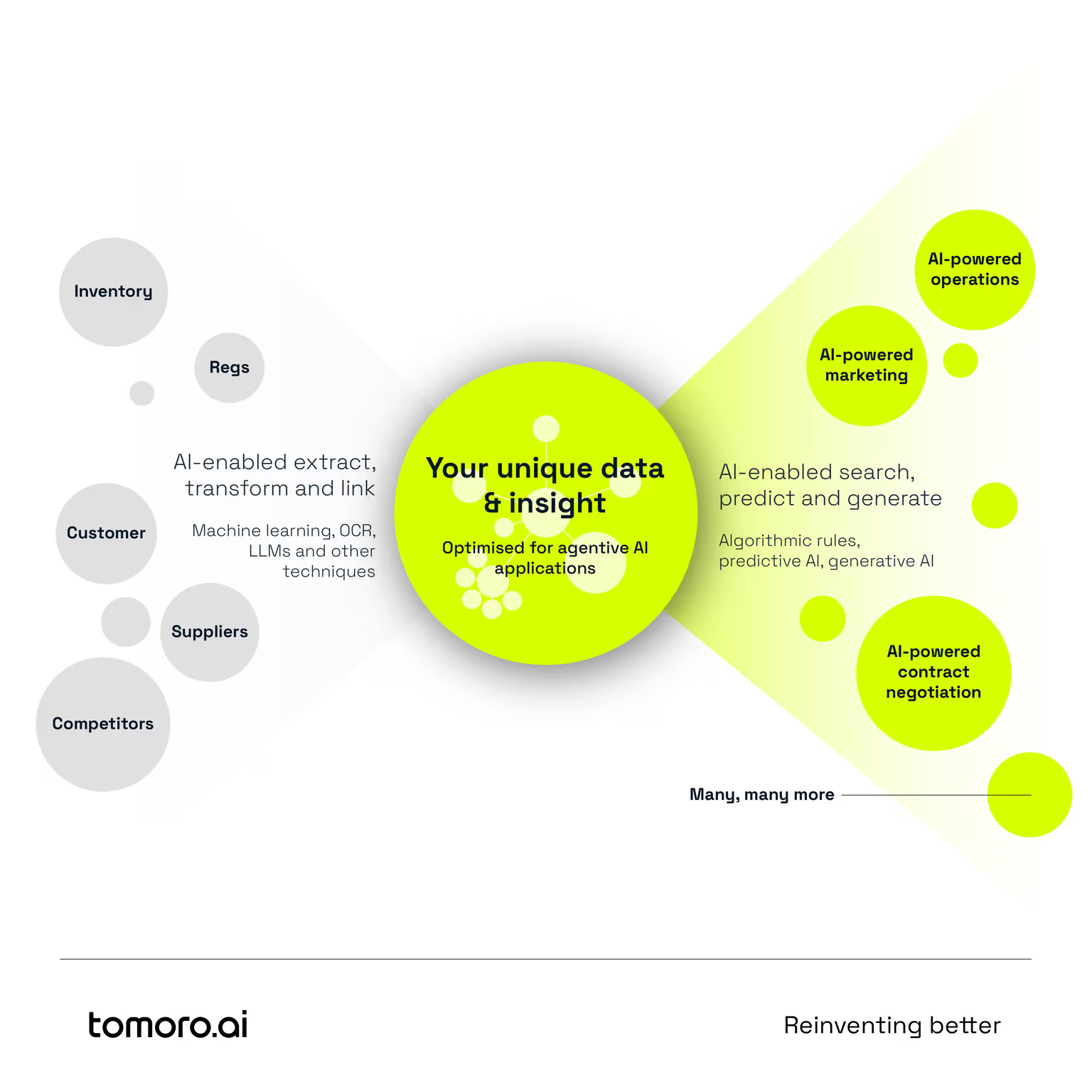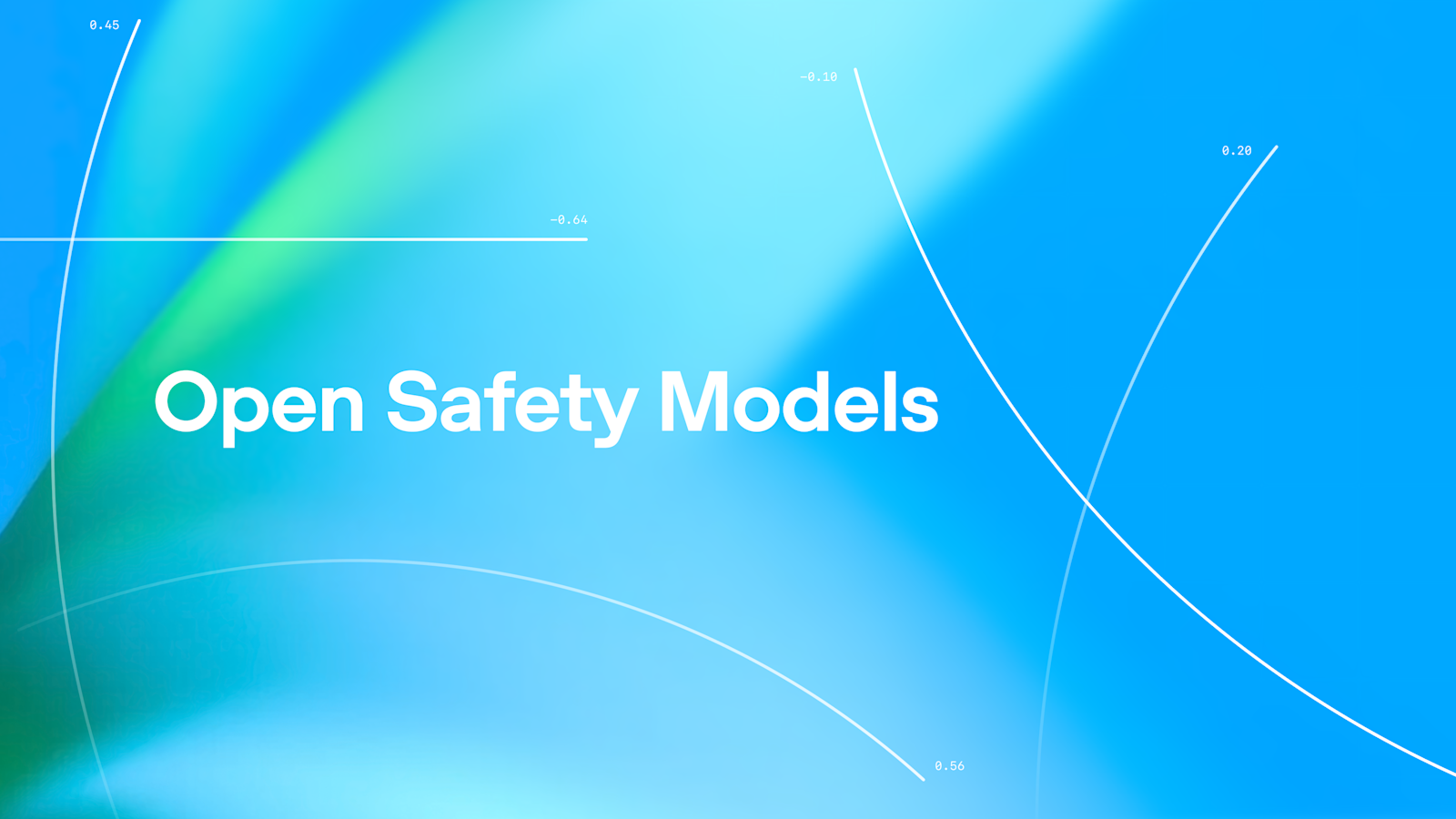Generative AI in a business context can feel overwhelming - everyone in the business has some level of exposure to it, and for solution designers it can feel like an onslaught of an almost infinite range of solutions that you’re supposed to have an opinion on and help people shape.
One of the challenges we often hear from clients is “but how do I know where I can best apply AI in my business? The technology is moving so fast how do I keep up?”.
This blog sets out to give you a simple mental model that can help you block out the noise and design what’s possible and what’s not possible with the AI tools available to you today.
Almost every AI business application is based on the same principles

Every business AI solution tends to have one or both of two key functions.
- How might we extract, transform and/or link data together from a set of siloed data sources?
- How might we find, predict and/or generate material or insight based on what we know today?
Before you laugh and say that’s far too simplistic! Let’s take a look at a few real examples to get the idea.
Of course what sits behind those two functions has serious technical complexity, everything from building your own ML models to fine-tuning someone else's or prompt engineering. But crucially, to get people started on designing what's possible, it helps to abstract away the technical noise and simplify.
Customer service assistant
Context
Many organisations are deploying AI assistants in their customer service function - from getting robo-agents to manage calls and triage, resolve or escalate customer queries for faster resolution to augmenting human staff to find the right information to resolve a customer’s query quickly and appropriately.
Solution
Extract, transform and/or link
- Gather data from the CRM, appropriate policy or business process guide
- Link this data together to be able to trace between a customer’s request and the appropriate internal answer
Find, predict and/or generate
- In real-time, search for this customer and the history of engagement with them (they’ve called 3 times with the same complaint…)
- Predict the likely end-point of the request (in 95% of circumstances we allow the customer to return the product with a refund in this situation) to minimise cost of the interaction.
- Generate the right response to the customer, either a custom message for the AI chatbot to send or provide the human staff a recommended next-best message for them to use at their discretion.
Complex contract negotiation assistant
Context
B2B businesses are often involved in complex negotiations with their clients and suppliers regarding the cost of goods. A good example of this is in the chemical business, where both supply-side and buy-side contracts are a function of geopolitics, competitor activity, financial markets, and even weather events worldwide.
These businesses are using AI to help find the optimised price, negotiating position and even negotiating narrative to optimise their position in the market and realise competitive advantage.
Solution
Extract, transform and/or link
- Extract key facts from a range of complex data - podcasts of market analysts, satellite pictures of geopolitical events or tables of complex data.
- Transform these facts into a coherent knowledge repository which joins concepts across document silos (i.e. a key competitor has shut down a factory for 3 months based on an aside statement by their CEO on an interview and satellite data of their car-park).
- Join this data together alongside pricing data
Find, predict and/or generate
- Generate a narrative to the client on why the price changes and back it up with the right knowledge at the right time.
- Back this narrative up by being able to quickly find the right evidence from across the datasets - being able to find lineage back to the original.
Next-best-conversation personalised marketing
Context Over the last ten years, many businesses have used next-best-X predictive models to engage their customers. These models aim to use historical data to predict the next event a particular customer will do: from what t-shirt they want next to what big financial decision is likely to come down the line next.
Leaders in this field are now turning to the new wave of generative AI to make this even more performant. This includes using previously hard-to-access datasets (e.g., long-form text data like notes written in a CRM) and providing a tailored message rather than a generic one - designed for maximum utility for that particular customer (here’s what you’d look like in the dress as opposed to a generic model).
Solution
Extract, transform and/or link
- Build a customer profile from transaction data, CRM, external data etc (what is appropriate and accessible)
- Join this data together across data quality issues (Ash Garner, Ashley Garner, Mr A Garner).
Find, predict and/or generate
- Find historic look-a-like customers who looked similar to those in question in the past - what did they do next?
- Run small-scale A/B test rollouts to quickly measure and iterate the next action based on an intervention - and optimise for your intended outcome
- Generate personalised content based on your customer profile and run similar A/B tests to tune the message across what is most useful, compliant and in your unique tone of voice.
How can this help you?
Ok, so maybe we’ve convinced you that this is a useful mental model - how can you apply it?
When people or teams in your business come to you for possible “AI solutions”, try asking these questions to frame what’s possible:
- What data sources does this process use today? What data would be needed to make a more informed choice?
- How do the people who run the process join the data together today (in a spreadsheet, in their heads?) to form coherent insight?
- To what extent is this a search problem? Do they just need to find the needle in the haystack more quickly?
- Is it a case of generating new content or making a new prediction to steer a future decision?
- Finally, to what extent does this solution use unique data or know-how that is only available in your business?
Knowing the answers to these will give you a solid foundation for determining what’s the most feasible. Then, start calling your AI team (or Tomoro) to discuss how to get started on the fun bit—building it!
Don’t let all the hype confuse you. In most cases, the best answer is the simplest one if you know how to think about it!


